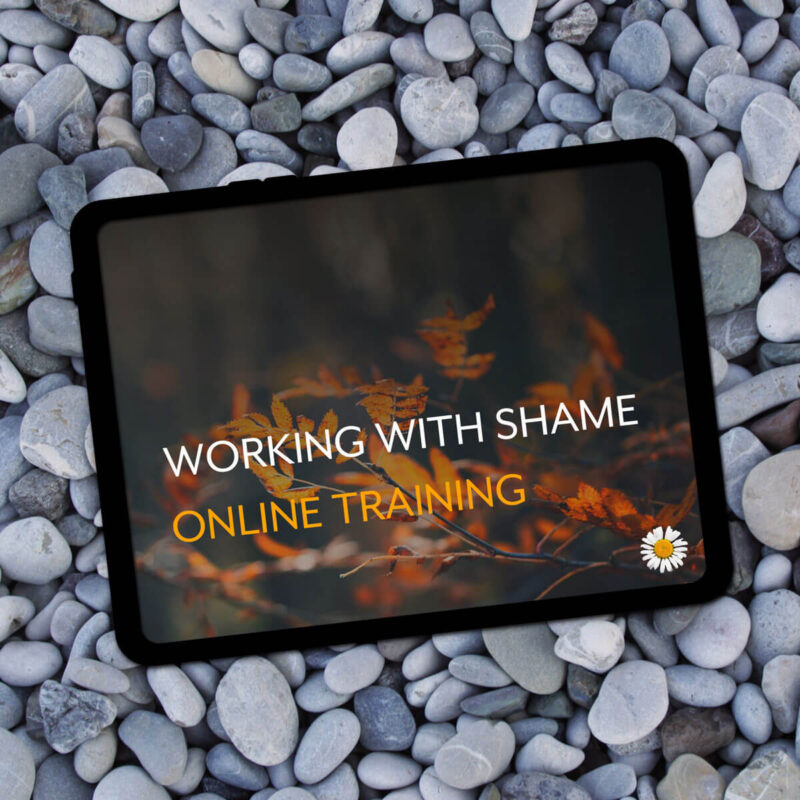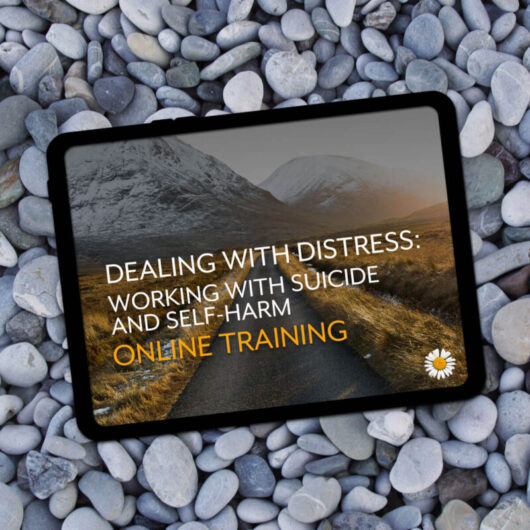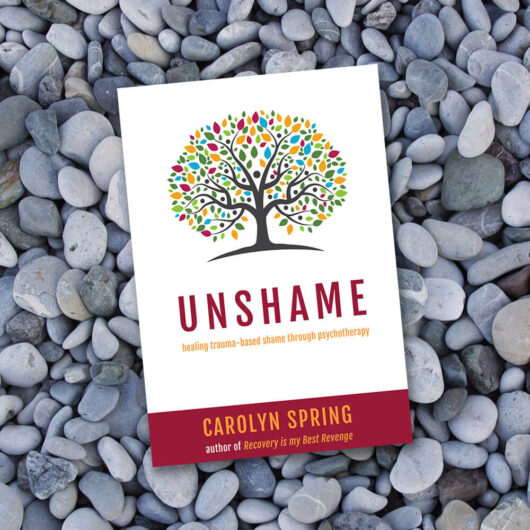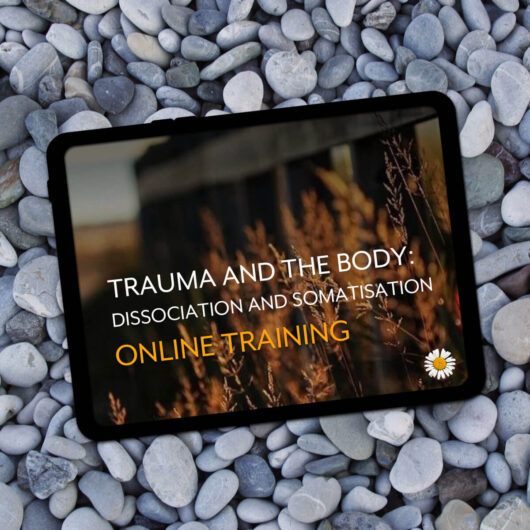A heartfelt, emotive course on the neurobiology of shame, its overlap with trauma, and how to work effectively with it in the therapy room. With both left-brain neuroscience and right-brain personal narrative, this course uniquely looks at how shame manifests first and foremost in our bodies, and how to work with shame without exacerbating it. Join me on the journey from crippling shame to living with the courage to be imperfect.
“A truly wonderful brave and important exploration of shame. I have come away knowing I have learnt a lot. This is in part through cognitive knowledge and new perspectives and importantly through self reflection and feeling my own relationship to shame in the ways put forward.”
“Absolutely brilliant. A thorough exploration of shame from someone who has, clearly, done the work. Accessible, insightful, shocking, thought-provoking and informative. I feel there is so much I can use in working with clients who are ‘in shame’ and indeed, to support me to reflect on my own state, stance and story with regard to shame. Thank you to Carolyn for sharing her story and herself. I will be back for much more training.”
“Inspirational, insightful, empowering and humbling! I’ve already started to use this material with my clients and can see a difference in us both, with an increased understanding and relationship with shame. Thank you for your honesty, strength and courage, Carolyn – not just to share your story, but to share your recovery and help counsellors to work with shame with a greater depth of appreciation and understanding.”
“Loved this course. Carolyn’s honesty and openness in sharing her story is inspirational. The length of each section was perfect to be able to study in bite-sized chunks and to allow for reflection after each part. Value for money excellent. Really easy to use. I will use what I have learned both in my work with clients but also in my own personal journey in defeating my own shame gremlins – thank you, Carolyn.”
“I found this course to be comprehensive in all aspects of mind, body, emotions. I have worked with clients for years on toxic shame and this course taught me things I had no idea about before and which have transformed the quality of the therapy I now provide to clients suffering with toxic/unhealthy shame.”
“I am very impressed by the quality of this training. Carolyn’s honesty as a survivor is to be admired and respected – she has created a course which is of great benefit to others dealing with experiences which have left an impact on them. As soon as I started the course it was benefitting my practice – changing my knowledge and understanding.”
“I suppose I ought to start by saying I’m a survivor rather than a professional. It’s perhaps not unreasonable to wonder what I could get out of a course that seems primarily directed at professionals. Actually, it’s a lot. Psychoeducation is the framework I personally need in order to more freely engage in therapy. I need to know ‘the point’ and ‘the why’ of things in order for them to have resonance and open up to them. Carolyn provides a researched account of the purpose of shame, its enaction and how to disarm it. There are plenty of pointers to further research too. I also feel validated via the personal elements shared. The knowledge that it’s not just me lays a foundation for connectedness to the human race, which for so long, I have felt excluded from by my experiences. It’s hard to verbalise just how huge that is: a hope that pierces the darkness of isolation and otherness. Thank you, Carolyn.”
“The best thing about Carolyn’s online training is that I could give myself the time and space to pause the session when I needed, to take notes and to process both the content as well as my own experiences of how I relate to and experience shame. I also really liked the option of breaking up the training into manageable chunks over 2-3 days. I loved Carolyn’s tone and pace – it conveys warmth and integrity and the ‘recycling’ of lived experience into such important work is something to be highly respected. Thank you.”
- Available instantly upon purchase
- No set schedule – work at your own pace
- 6 hours of CPD with certificate upon completion
- Downloadable resources and additional reading for a comprehensive learning experience including:
- Course Notebook (with space for notes, reflection questions, session summaries, references and links)
- PowerPoint handouts (two versions, one with space for notes, one for easy printing)
- Set of psychoeducational posters (full-colour and low-ink versions)
- MP3 audio files
- Videos available to stream or also downloadable for offline viewing
- Lifetime access
- Start/stop and return as often as you like
- Easy to use: only needs a web browser and PDF reader
- Individual licence only: for multiple users and information about discounts for organisations, please click here.
Shame can be the single biggest hindrance to making progress in therapy, recovering from trauma, building positive relationships, and moving forwards with life. Shame stops us in our tracks – because, from an evolutionary neurobiology perspective, it’s supposed to. Shame is the handbrake on action in order to keep us safe: rather than utilising active strategies to overcome our obstacles, shame causes us to huddle up, crouch down, freeze, and make ourselves invisible. It has a protective function, but one which can end up as a self-reinforcing loop: a vicious cycle.
I know this, because my life has been crippled by shame. Join me on this course where I combine the latest neuroscience insights with my own personal narrative of a journey towards ‘unshame’.
Shame manifests as the often unconscious belief that there is something fundamentally wrong with us as people – that we are ‘bad’. We often cannot define that badness, or even determine its cause. It just is. And that’s what makes shame so difficult to deal with. It lurks below the surface of consciousness, infecting everything we do and everything we feel, and often remaining frustratingly out of reach. It is not unusual for people to struggle with shame for years and even decades, nullifying progress that they may be making in other areas.
For survivors of child sexual abuse, shame is a kind of universal, identifying characteristic. And for survivors of other kinds of trauma, shame is never far away: if not shame at what happened, then shame at how we responded. Shame and the freeze response go hand-in-hand. And yet shame has its roots in our evolution and is not an accident. It has a protective function, so, if approached in the right way, could it actually be our friend?
This course will look at shame from this unique perspective: of trying to figure out what shame is trying to achieve for us, and then working with it to shift it. We’ll look at the good, the bad, and the ugly of shame, and how it manifests especially in a therapeutic setting. Aimed principally at counsellors and psychotherapists, but also relevant to other helping professions as well as people recovering from trauma, this course will take a trauma-informed, neurobiological approach to the issue of shame and look at how transformation really is possible.
Intro Video from Carolyn
Course Content Summary
Overall
In this course, aimed principally at psychotherapists working with trauma survivors stuck in shame, delegates explore shame from a neurobiological perspective, where shame is an evolutionary survival strategy rather than a pathological response. By exploring the neural and physiological underpinnings of shame in the context of polyvagal theory and the latest trauma research, therapists are guided to explore how they can use compassion and deep connectedness to change their clients’ neurobiological state out of the ‘red zone’ (dorsal vagal) of stuckness and freeze, characteristic of shame. This then provides a platform for clients to explore the stance of the self towards shame and in particular to develop self-compassion and then the courage to change their shame story. From changing state to changing stance to changing story, clients are then able to move out of the limiting safety of shame into the unlimited possibilities again of relational connectedness.
Session 1
- Understanding a framework for understanding shame that is based in its neurobiology.
- Understanding that to work effectively with shame there is a neurobiological sequence, from changing our state to changing our stance to changing our story.
- Exploring the neurobiological correlates of trauma and shame.
- Examining the phenomenological role of ‘shame gremlins’ in our lives.
- Exploring the concept of shame resilience especially in terms of daily life mode (approach) rather than danger mode (avoid).
- Introducing a technique for modulating distress.
- An overview of the lived experience of shame.
- Exploring the need in working with shame to sitting with distress, rather than exacerbating it.
Session 2
- Introducing a roadmap for the course content based on a non-triggering approach to shame (state, stance, story).
- Introducing the concept of shame not as ‘a bad thing’ or as dysfunction but as an essential survival mechanism.
- Introducing polyvagal theory in terms of a ‘trauma traffic light’ and shame as a ‘red zone’ instinctive physiological and neurobiological response.
- Examining behavioural responses to shame linked to the trauma traffic light (moving away, moving towards, moving against).
- Introducing the concept of shame’s impacts on relationships via a shutdown of the ‘social engagement system’.
- Introducing the idea of developing a ‘drill’ (a pre-planned sequence of responses) when shame is triggered.
Session 3
- Introducing the concept of ‘neuroception’ and shame as a response to unsafety in terms of relational threat.
- Understanding shame behaviours as strategies to attain relational safety.
- Applying this understanding to the therapist’s need to communicate safety to a client at both a conscious and unconscious level.
- Exploring the idea of the medical model as an implicit shame trigger.
- Exploring how judgment of the client can trigger shame.
Session 4
- Exploring the idea of safety as the neural basis for the green zone of ‘social engagement’.
- Examining different instinctive physiological responses to connection bids (e.g. smiling) based on prior experience.
- Exploring the impact of prior trauma on state regulation, and framing resilience as the ability to shift fluidly and contingently between states.
- Understanding crossover physiological states of amber/red (intimacy, vulnerability) and amber/green (play, courage).
- Understanding the red zone as disconnection and the green zone as connection.
- Further understanding the green zone as home to compassion, empathy and attunement, and the relevance of this for healing from shame.
- Exploring the dual stages of a compassionate response, via an amber zone response which can result in empathic distress, or pushing through to a green zone response which results in true compassion.
- Exploring skills for developing true compassion, including mindfulness and ego-boundary distinction, and the importance of avoiding rescuing.
- Exploring the profound effect of compassion on changing neural architecture and even immune response.
Session 5
- Practical guidance from the research on how to communicate compassion
- Exploring the dogma of ‘no touch’ and counterarguments
- Exploring the suitability of the ‘standard therapeutic frame’ for working with complex trauma and embedded shame.
- Exploring the need in working with shame to meet rather than shame needs and how such needs can be met ethically.
- Introducing the concept of shame and stuckness as being neurobiological correlative states.
- Addressing the drive towards quick solutions which exacerbates the shame of being stuck.
Session 6
- Exploring the concept of ‘changing the stance of the self’ as established in the attachment literature and in relation to shame.
- Exploring the phenomenological experience of shame and self-hatred and the cycle of numbing and attack.
- Exploring the concept of reframing shame from being ‘the enemy’ to being ‘our friend’
- Understanding the evolutionary survival advantage of shame as a brake on behaviours that risk our exclusion from the tribe.
- Exploring the physiological correlates of shame (and ‘unshame’) in terms of posture.
Session 7
- Exploring the systemic shame endemic in the therapy professions.
- Exploring the need for therapists to guard against ‘puffing up’ (taking on the role of the ‘expert’, or shaming the client) or ‘shrinking down’ (acceding to imposter syndrome, or being shamed by the client.)
- Exploring the importance of holding boundaries which are regulating for both therapist and client.
- Exploring the experience of ‘shame-rage’ and how as a therapist to handle it.
Session 8
- Exploring the concept, having focused firstly on changing both state and stance, of changing the ‘story’ survivors have around shame.
- Exploring the role of developing self-compassion rather than continuing to self-shame.
- Understanding the ineffectiveness of shame in behavioural change.
- Exploring tools to develop self-compassion and other-compassion on the road to healing from shame.
Session 9
- Exploring the phenomenological experience of shame in the context of relational breakdown.
- Exploring how the emotion of shame can block the processing of all other feelings.
- Exploring the concept of using the ‘accelerator’ as a counter to the ‘brake’ of shame.
- Exploring the concept of sharing our shame stories to defuse them, but only to people who have earned the right to hear them.
- Distinguishing between the courage to share shame stories in person (in therapy) versus to strangers on the internet.
- Exploring the idea of shame offering the safety of a prison cell, whereas healing from shame requires compassion, courage and a sense of purpose.



